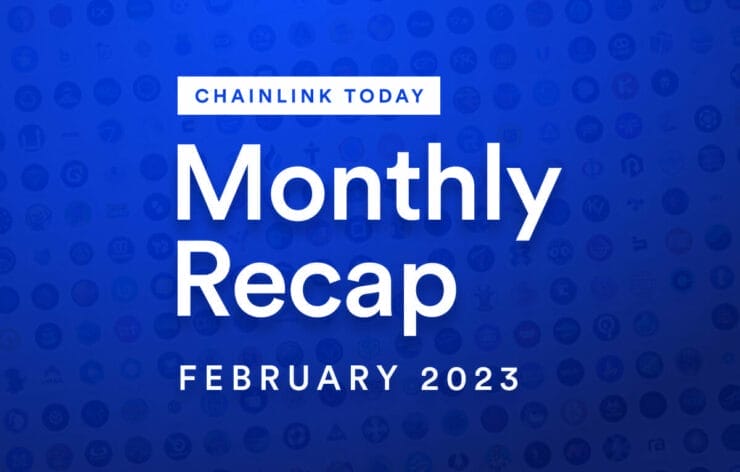In a January interview with CNBC’s Amanda Drury, Chainlink co-founder Sergey Nazarov said a growing number of traditional financial institutions and decentralized exchanges are working to adopt Chainlink’s Proof of Reserve (PoR) as a new minimum standard for transparency that can prevent crises like last year’s FTX collapse.
February saw an increase in PoR adoption among important projects in the Chainlink ecosystem, beginning with the announcement that Aave Protocol is integrating PoR in order to secure adequate collateralization of wrapped assets on the Avalanche network. Founder and CEO of Aave Companies, Stani Kulechov, called the integration “a necessary step forward” in ensuring Aave’s end users have the highest degree of confidence in the protocol’s reliability.
“Real-time access to the state of cross-chain liquidity pools increases the transparency and verifiability of the Aave market on Avalanche,” he said.
Last week, TrueUSD (TUSD) announced that it will become the first USD-backed stablecoin to programmatically control minting with PoR. PoR will enable automatic verification of USD reserve data aggregated in real time by independent U.S. accounting firm, The Network Firm, to ensure sufficient collateralization before minting new TUSD.
CEO of Archblock (the issuer of TUSD), Ryan Christensen, said PoR boosts the reliability of TUSD as a form of payment and collateral throughout the DeFi ecosystem by ensuring it is always collateralized by off-chain fiat reserves. Sergey Nazarov called the integration an important milestone for stablecoins and the entire DeFi sphere.
“With Chainlink Proof of Reserve, TUSD is able to provide greater levels of assurance and confidence to its users, and help bring greater stability to stablecoins and the broader crypto industry,” Nazarov said.
Chainlink Automation is also playing an important role in the world of stablecoins. Recently, MakerDAO announced its vote to integrate Automation as part of Maker Protocol’s Keeper Network, which maintains the DAI stablecoin against the U.S. dollar. Chainlink Labs’ VP of Go-To-Market, Johann Eid, said the integration “demonstrates the necessity for highly performant automation infrastructure and indicates a prosperous future for decentralized financial services.”
The Chainlink Network also added a new data provider in February when TP ICAP announced that it will deliver its high-quality forex data supporting more than 960 pairs on-chain via Chainlink. Rhys Spencer, Head of APAC Sales for TP ICAP’s data and analytics division, Parameta Solutions, said joining the Chainlink Network allows TP ICAP to reach the deepest web3 developer pool possible in anticipation of “what could be a generational upgrade to market infrastructure and data solutions.”
Chainlink SCALE, a key Chainlink Economics 2.0 initiative aimed at accelerating the growth of blockchain and layer-2 ecosystems through Chainlink’s oracle services, also expanded in February. StarkWare recently announced its upcoming partnership with Chainlink Labs and participation in SCALE in order to advance the adoption of its StarkNet layer-2 solution.
“We’re excited to be joining the Chainlink SCALE program to provide our ecosystem of developers with access to the industry standard for oracle services, enabling a next-generation of globally scalable Web3 applications to be built on Starknet,” said StarkWare’s co-founder and President, Eli Ben-Sasson.
Rounding out Chainlink Today’s February highlights is our interview with Chainlink node operator, LinkRiver. LinkRiver co-founder Rob Zimmermann shared some of the inspiration driving his team, explained what it takes to secure web3’s leading decentralized oracle network, and shed light on why he believes Chainlink is “the most promising project of our time.”
View the entire Chainlink ecosystem in one place.



